SCALE OF THE WING OF MORPHO MENALUS (MENALAUS), (the Central and South American Irridescent Blue butterfly):
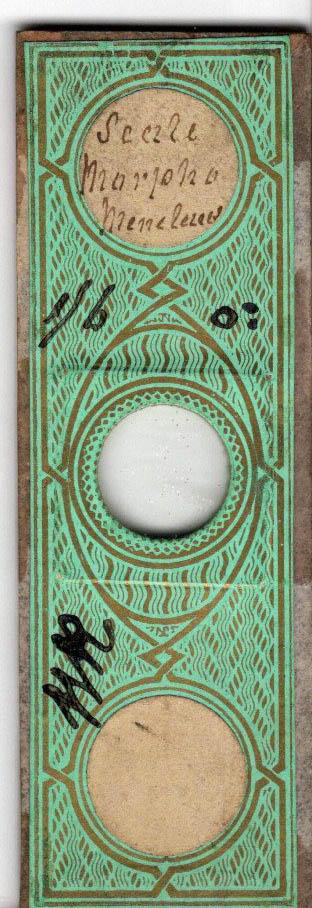 The scale of this butterfly was one of the first
The scale of this butterfly was one of the first Test Objects
proposed by Goring in 1827. It was one of many used as a standard for a number of years. In fact the slide used for this web page belonged to William Rutt, one of the founding members of the Hackney Microscopical Society and is therefore dateable to about 1860, more than 20 years after Goring's papers. The slide is one produced by the celebrated J.T. Norman whose initials of J combined with N are found in tiny print on the paper of the slide.
The linear markings of the scale are easily discerned with a low power objective. The more difficult cross striations are visible with oblique top lighting with a 20X 0.46 n.a. objective, but with transmitted light these markings require a higher n.a. There is a suggestion of these with a 20X objective with n.a. of 0.46, but they were clearly seen with my 40X objective with n.a. of 0.70 and oblique substage transmitted lighting, correlating closely with Rutt's notation of 1/6 oi
, the 1/6 corresponding to a focal length of 1/6 inch, which is close to the focal length of my 40X S-Plan 0.7 n.a. objective. His Pritchard microscope was apparently equipped with a 1/6 inch objective with an angular aperture of 135 degrees which corresponds to a n.a. of sin(67.5)= 0.92. According to the table of his objectives, assuming he had a 1/4 it would have a n.a. of 0.68 which might also have resolved the cross markings.
One of the most interesting thing about these scales is that they appear blue when illuminated from above, as in nature. In reality, there is no pigment in these scales. The blue color is imparted by the complex laminar arrangement of the substructures of these scales causing refraction and interference of light resulting in the striking blue color. When these scales are viewed oblique top lighting their blue color is apparent, but with transmitted light, or when they are mounted in a mountant such as Canada balsam, no color is apparent, the features being of interest being the markings. Sometimes parts of wings were mounted dry to illustrate their spectacular colors, rather than their microscopical details. My collection does contain wings of other species of Morpho but none of M. menalus. David Walker, Howard Fink and Brian Stevenson have shown that the modern scales of what we now call Morpho menalaus
are not exactly the same as the scales mounted in the 19th century. This could be due to a number of factors including the fact that the insect, in adapting to changing environments, may have changed over the years. Another is that that Morpho menalaus has sometimes been referred to as the Azure Blue butterfly
, which today refers to a North American and European blue butterfly of smaller size, and its scales substituted, though the scale shapes are slightly different. Today's specimens of M. menalaus are actually commercially bred in South America, whereas it can be presumed that the specimens of the 19th century were simply collected in the wild. Another possibility is that another Morpho species (of which there are many!) could have been the ource of the scales for these 19th century slides.
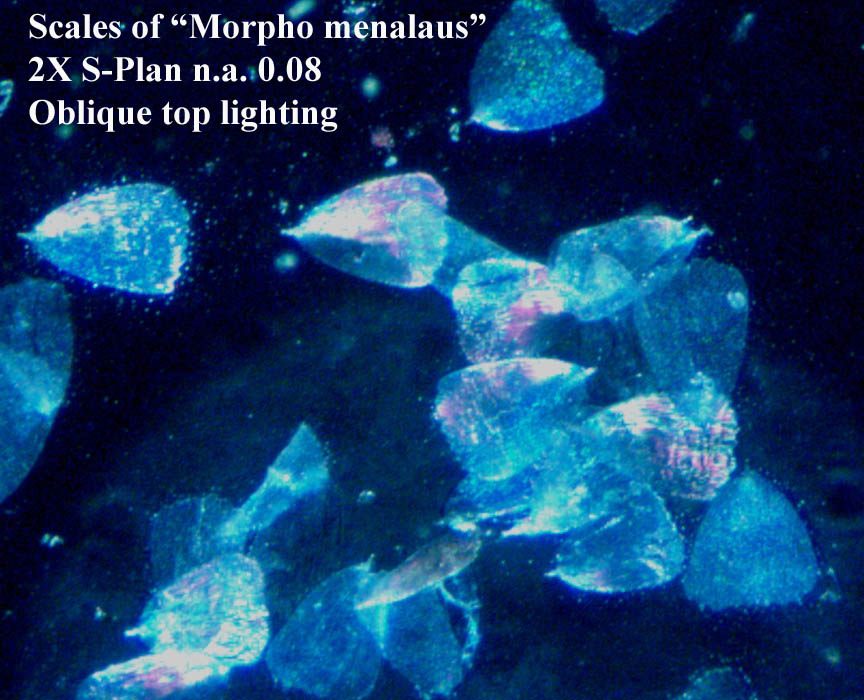


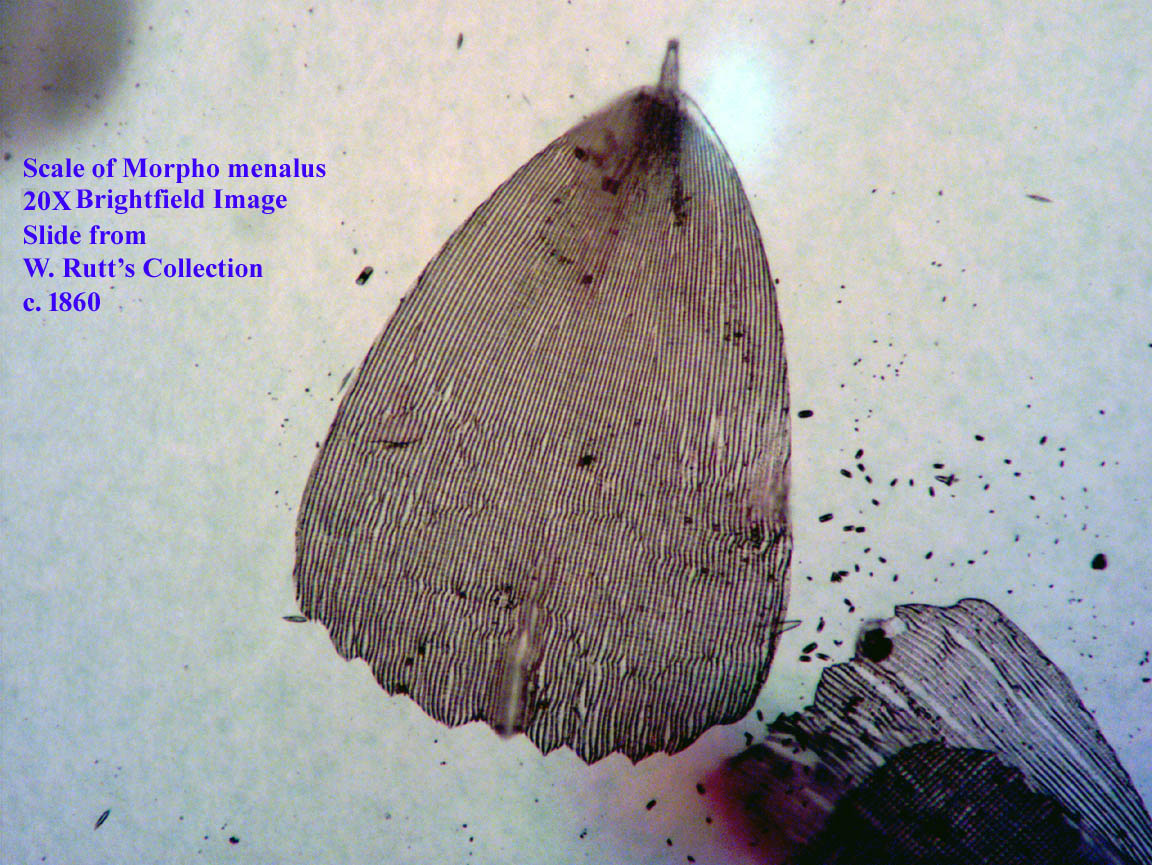
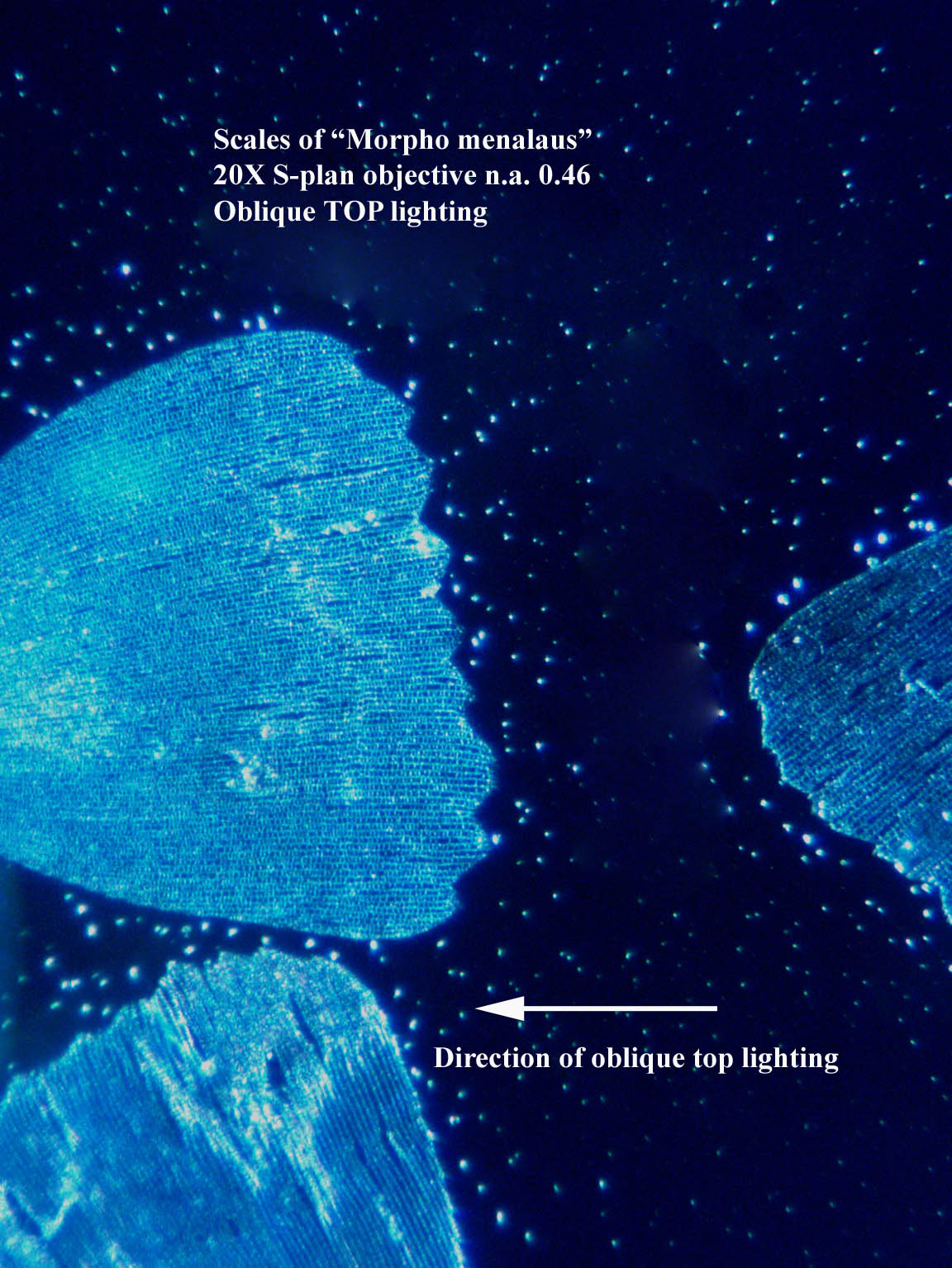
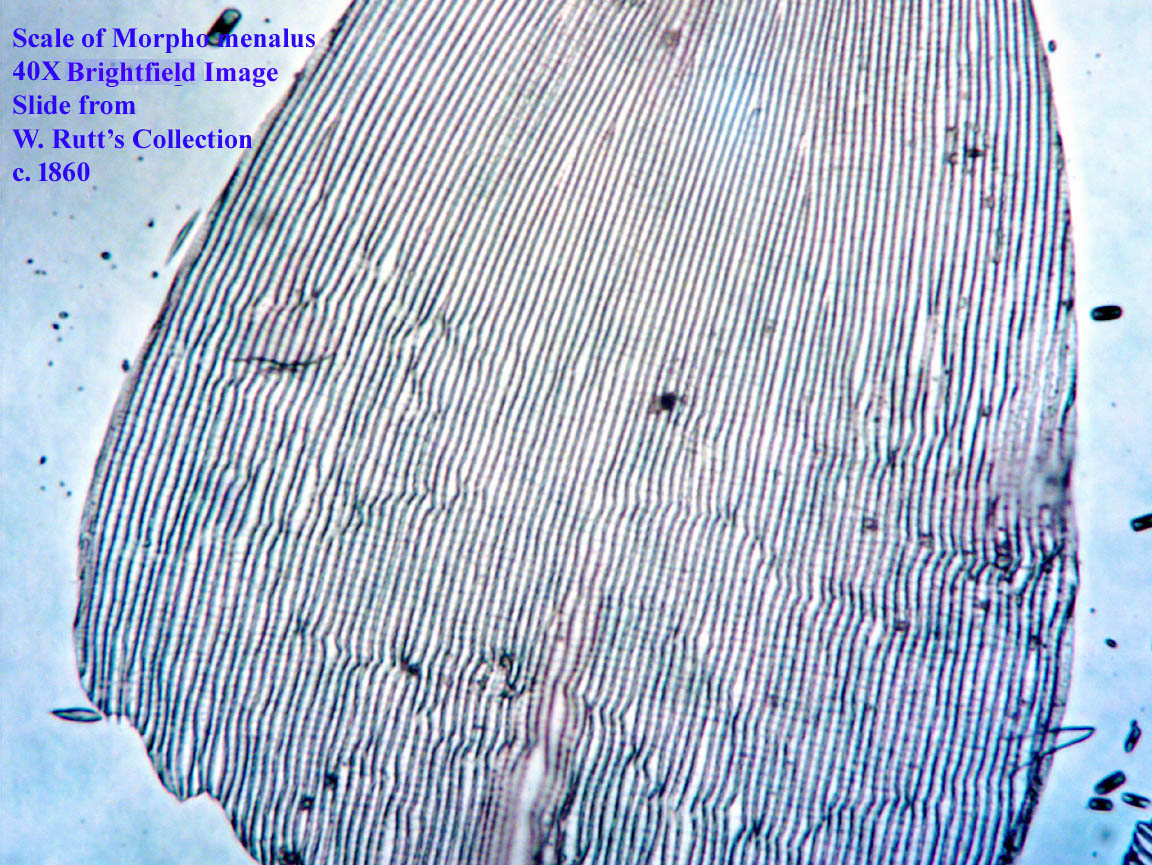
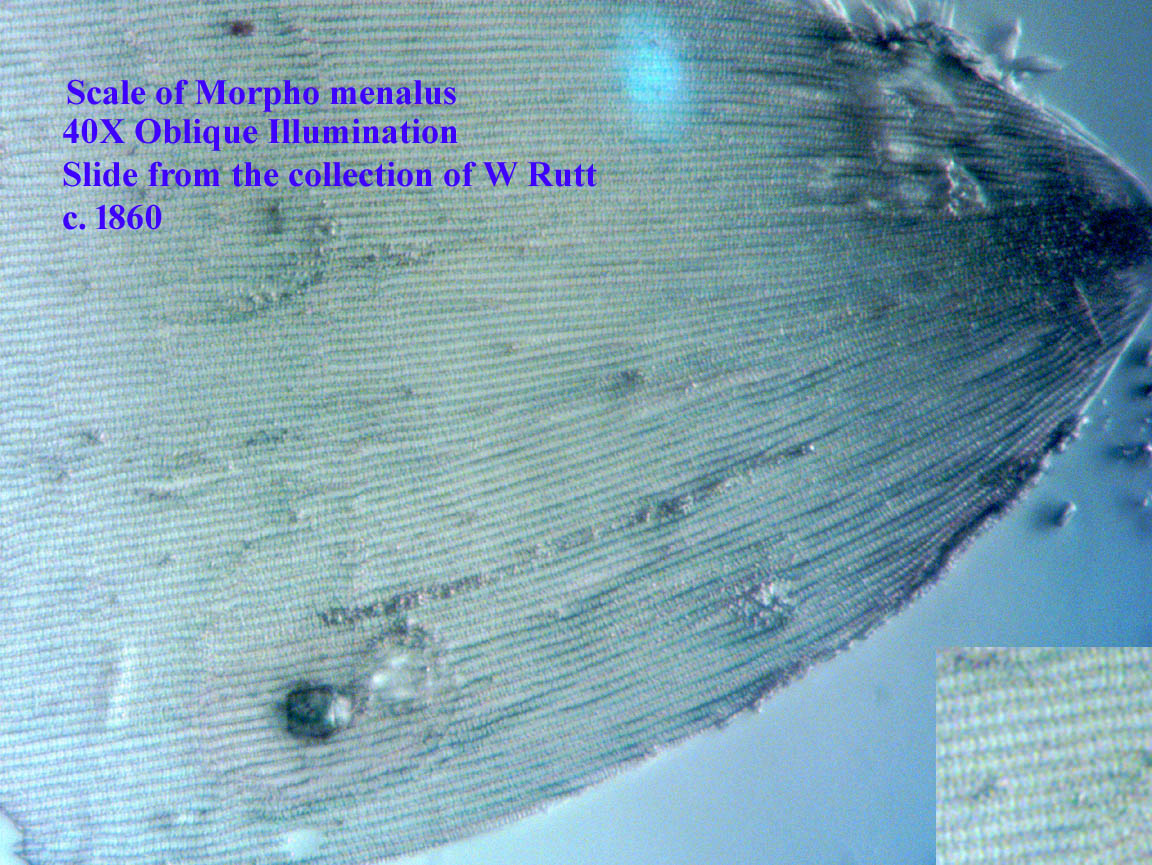
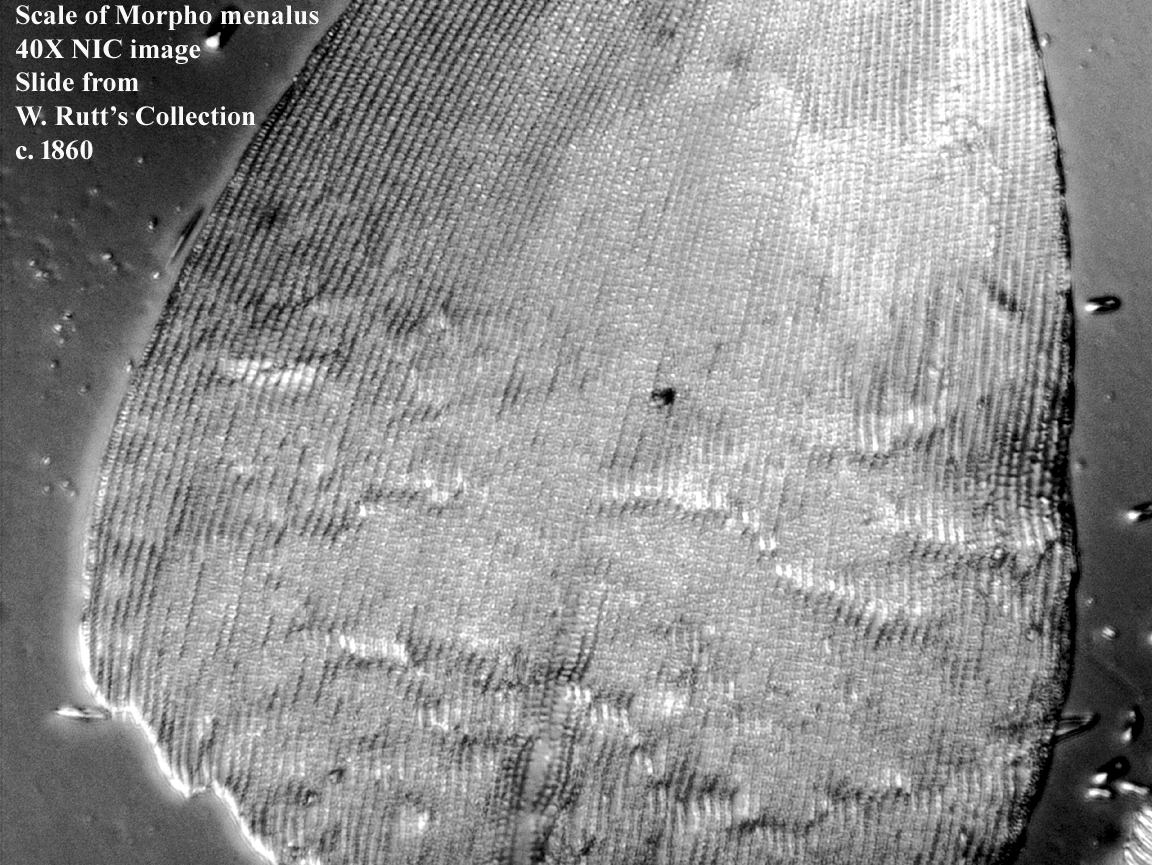
 The scale of this butterfly was one of the first
The scale of this butterfly was one of the first 






